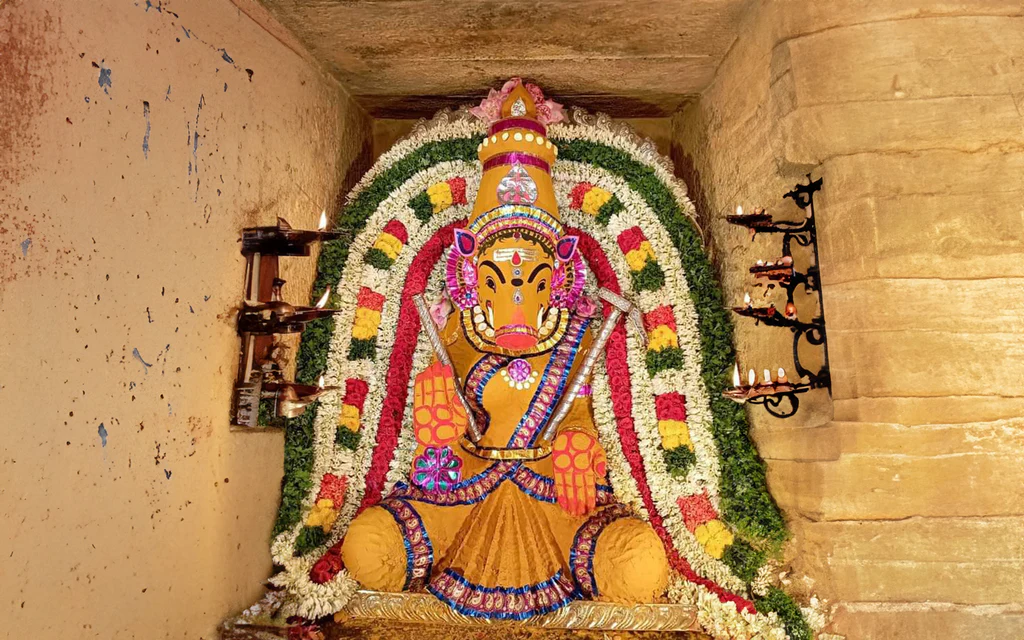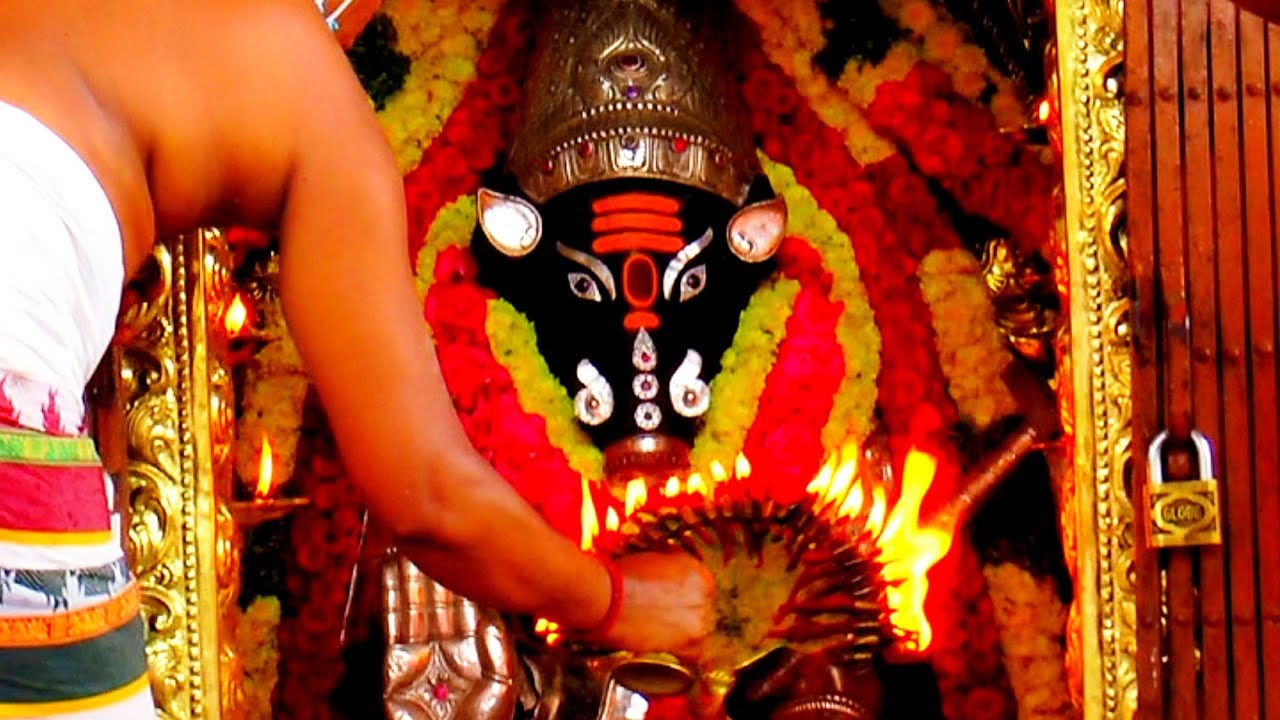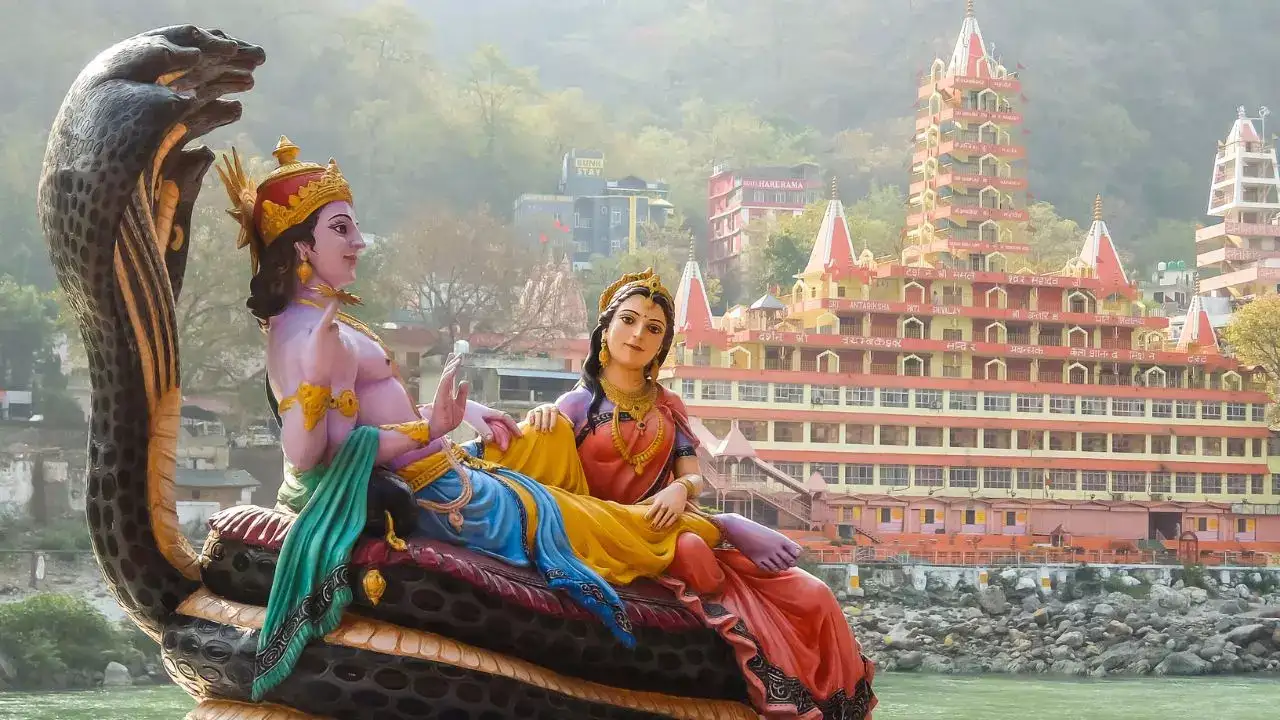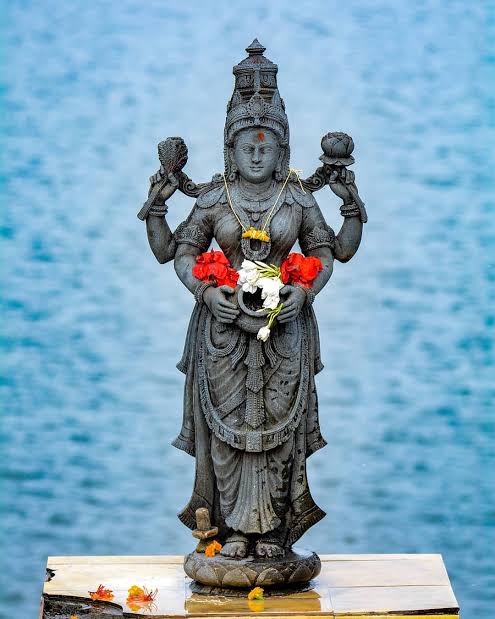Ashadha Gupta Navratri: Nine Power Nights of Performer Goddess Varahi
Ashadha Gupta Navratri is a little-known, sacred nine-night festival in the lunar month of Ashadha (mid-June to mid-July). Devotees quietly worship both the Navadurga, nine divine forms of Durga and nine powerful manifestations of Varahi Devi, seeking hidden blessings of prosperity, protection, and spiritual growth.
Also known as Varahi Navratri or Gayatri Navratri, it spans Pratipada to Navami of the Shukla Paksha. Each day, one form of Goddess Durga is worshipped, concluding with Durga Puja on the ninth day, while Varahi forms are invoked nightly through secret kata and bhakti samagams. Mantra chants like Durga Saptashati support the approach.
Deities Associated
-
Navadurga: Each of the nine days, one form is worshipped:Shailaputri, Brahmacharini, Chandraghanta, Kushmanda, Skandamata, Katyayani, Kalaratri, Mahagauri, and Siddhidatri, culminating in a grand Durga Puja.
-
Goddess Varahi: Each night celebrates a different aspect of Varahi: Swapna (dream protector), Chaitanya (awakening), Sankat (obstacle-remover), Ugra (fierce warrior), Dhoomra (smoky wisdom), Kriya (action), Shanta (peaceful), Vichitra (miraculous), and Maha Varahi (supreme) – as outlined in sacred calendars

“In nine power‑filled nights, Durga’s grace and Varahi’s fierce maternal protection merge to bless seekers with prosperity, courage, and spiritual clarity.”
Origin, Significance & Astrological Relevance
Origins
Ashadha Gupta Navratri, also called Varahi Navratri or Gayatri Navratri, finds its earliest scriptural roots in the Brahmanda Purana, Devi Bhagavatam, and Durga Saptashati. These texts describe four major Navratris in a year, two public (Chaitra and Sharadiya) and two secret or “Gupt” (Magha and Ashadha).
The Ashadha observance, held during the Shukla Paksha of Ashadha month (June–July), was designed for inward, quiet spiritual practice. It’s called “Gupt” or secret because the rituals are not publicly performed, and the sadhana is usually done in solitude or silence by devoted seekers, sadhaks, and tantriks.
The festival’s core deity, Varahi Devi, originates from multiple layers of divine creation stories. One narrative from the Lalita Sahasranama says Varahi emerged from the consciousness of Lalita Tripura Sundari as her ego-personified energy. Armed and powerful, she was made the Commander-in-Chief of Lalita’s divine army, tasked with defeating the demon Vishanga.
Another account in Durga Saptashati portrays Varahi as a Matrika, born from Varaha Swami’s energy, to aid in Devi’s war against Shumbha and Nishumbha. These stories give Varahi her boar-faced identity, holding plough and pestle, symbolizing earth, discipline, and nourishment.
As Ashadha is also agriculturally significant (beginning of monsoon and Earth’s renewal), Varahi’s connection to land, fertility, and protection made her the focal deity of this period. Over centuries, practitioners of Shakta, Tantric, and Aghora traditions began observing this Navratri for invoking not just Navadurga but also Dasha Mahavidyas, Sapta Matrikas, and the nine transformative forms of Varahi.
This synthesis of Vedic, Puranic, and Tantric traditions shaped this Gupta Navratri into a spiritually potent, multidimensional observance for inner transformation, karmic cleansing, and divine protection.
Spiritual Importance
-
Varahi offers swift results destroying fear, poverty, enemies, and illness, and promoting justice, wealth, and Siddhis. She uplifts seekers across material and spiritual realms.
-
Worshipping Navadurga strengthens internal fortitude, removes obstacles, clears graha doshas, and brings mental purity.
Astrological Significance
1. Timing: Cosmic Alignment in Ashadha Month
This Gupta Navratri falls in the Shukla Paksha (waxing phase of the Moon) of the Vedic lunar month of Ashadha (June–July). This period occurs just after the intense seasonal transition of summer solstice and aligns with the monsoon onset, when water nourishes Earth, a symbolism deeply connected to Varahi Devi, the goddess who governs Earth and fertility.
In Vedic astrology, this is a time when planetary forces begin shifting inward. As the Sun moves into Dakshinayana (southern journey) post-summer solstice, spiritual energies become more introverted and potent for inner work. This makes it a prime period for tapasya (penance), mantra japa, and invoking inner deities like Varahi.
2. Panchami Tithi and Varahi Devi’s Planetary Power
Varahi is the presiding deity of Panchami Tithi (fifth lunar day). Panchami is ruled by Jupiter (Guru) and linked with wisdom, growth, and dharma. Worshipping Varahi during Panchami removes ignorance and boosts spiritual intelligence. When performed in the waxing moon phase, it aligns with Brihaspati’s benefic influence, amplifying learning, justice, and grace.
Additionally, Varahi’s role as Dandanatha (goddess of justice) connects her with the Shani (Saturn) principle—karma, discipline, and delay. By worshipping her, one can neutralize Shani Dosha, legal issues, or karmic entanglements reflected in one’s natal chart.
3. Rahu-Ketu and Shadow Planet Pacification
Many forms of Varahi – especially Dhoomra Varahi and Ugra Varahi are worshipped to neutralize malefic effects of Rahu and Ketu, the shadow planets. These planetary nodes often cause confusion, mental unrest, karmic disruptions, illusions (Maya), and are connected with black magic and ancestral karma.
Varahi, as a fierce remover of darkness and illusion, is invoked in Tantric sadhanas during Varahi Navratri to dissolve Rahu-Ketu afflictions, particularly when they influence the Moon, Ascendant, or 12th house in a birth chart.
4. Karmic Purification and Planetary Remedies
Gupt Navratri rituals, especially when performed under Sarvartha Siddhi Yoga, Amrit Siddhi Yoga, or Tripushkar Yoga, help in karmic purification. These yogas create auspicious planetary configurations that act as astrological catalysts—enhancing the benefits of mantra, homa, and puja.
By offering prayers to Navadurga, especially during favorable planetary hours (Hora), one can strengthen specific grahas:
-
Shailaputri – Moon (Mind, emotions)
-
Brahmacharini – Mars (Energy, action)
-
Chandraghanta – Venus (Harmony, beauty)
-
Kushmanda – Sun (Vitality, leadership)
-
Skandamata – Mercury (Communication, intellect)
-
Katyayani – Jupiter (Wisdom, protection)
-
Kalaratri – Saturn (Discipline, fear-removal)
-
Mahagauri – Rahu (Illusion-clearing, purity)
-
Siddhidatri – Ketu (Mysticism, detachment)
5. Shakti Activation and Kundalini Awakening
From a Tantric-astrological lens, Varahi Navratri supports Kundalini Shakti awakening. When performed under Moon’s Pushya, Hasta, or Revati nakshatra, it enhances spiritual receptivity. The Moon’s waxing energy lifts the subtle energies from the Muladhara (root) toward the Sahasrara (crown), mirroring the journey through the Navadurga forms.
Varahi as Chaitanya Varahi and Kriya Varahi plays a vital role in channelizing planetary energies into successful outcomes. Those with blocked lagna, malefic dasha, or undergoing Sade Sati can use these nights to realign their astral blueprint.
6. Land, Property & Agriculture Remedies
Varahi is directly associated with Bhoomi tattva – the Earth element. Astrologically, she governs:
-
Mars (land and property)
-
Saturn (agriculture and karma)
-
Moon (Mother Earth, nourishment)
Those with adverse 4th house, Mangal Dosha, or property disputes in the chart benefit by invoking Varahi Devi to resolve real estate issues, land conflicts, and enhance crop yield for farmers.
7. Financial & Career Uplift
Varahi Navratri is believed to clear bad money karma when conducted with Varahi mantra chanting and Devi homa. Especially when Venus or Mercury is afflicted, these nine nights restore material balance. Varahi is invoked to break business stagnation, clear debts, and gain professional victory.
Why Astrologers Recommend This Navratri
-
Ideal for Shani, Rahu, Ketu, and Manglik dosha remedies
-
Best suited for Tantra mantra sadhakas, those in legal fights, health battles, or undergoing debilitating transits
-
Powerful if your chart has challenges in the 4th, 6th, 8th, or 12th houses
-
Enhances Chandra Bala (mental peace), and Guru Bala (life guidance)
Customs, Traditions & Rituals
-
Kalash Sthapana on Pratipada sets the spiritual container. A thumb-sized Varahi icon or image is placed and not moved till Navami.
-
Daily Puja: Light pure oil lamp and incense after sunset. Offer red flowers, jaggery water, rice dishes, turmeric, and kumkum. Prefer Shodasopachara or Panchopachara saman, chanting Varahi mantras and Gayatri.
-
Satsanga and Chanting: Recite Varahi Stotram (e.g., Varahi Shodasha Nama or Sahasranamam) and Durga Saptashati.
-
Purity Rules: Follow sattvic diet, avoid meat, alcohol, gossip, maintain celibacy, and suspend during menstruation if observing Deeksha .
Puja Vidhi & Puja Katha
Varahi Devi Puja Katha
According to the Brahmanda Purana and Lalita Sahasranama, Varahi Devi is a manifestation of Lalita Devi’s self-awareness (the “I” consciousness). When Lalita Devi prepared to fight the demon Bhandasura, she created an army from her divine powers. From her own consciousness emerged Varahi Devi, who was granted the Kirichakra chariot and made the Commander-in-Chief (Dandanatha Devi) of her cosmic forces.
Varahi Devi played a pivotal role in destroying Vishanga, a general of Bhandasura, and is celebrated in the Sahasranama as Vishanga-pranaharana-Varahi-veerya-nandita. She holds the plough (hala) and pestle (musala) as her weapons, symbolizing her control over land, crops, and human effort. Her boar face originates from the same divine energy as Varaha Swami, the boar-incarnation of Vishnu who saved Earth from the depths of cosmic waters by lifting Bhudevi on his tusks.
Another account from the Durga Saptashati describes her origin during the battle of the Sapta Matrikas against Shumbha and Nishumbha. When all gods offered their energies to help the Devi, Varahi emerged from Varaha’s power. She stood alongside goddesses like Brahmi, Vaishnavi, Kaumari, and Chamunda, each manifesting from the energies of major deities.
In Matsya Purana, Varahi is again mentioned as a warrior deity created from Lord Shiva’s force during his war with Andhakasura. In all stories, she appears as the fierce protector, earth-giver, and remover of evil energies and inner ignorance. She is also known for granting boons to true seekers and devotees who perform her worship with sincerity and restraint.
During Varahi Navratri, each night honors a specific form of Varahi, such as Swapna Varahi (dream protector), Chaitanya Varahi (awakened one), Sankat Varahi (obstacle remover), and culminating in Maha Varahi, the all-powerful supreme form. These forms are visualized through puja, mantra, incense, and offerings like jaggery water, with an understanding of their unique energies and blessings.
The final day concludes with Udvasana,a ritual farewell, where the devotee offers turmeric, kumkum, and a blouse piece or saree to the image of Varahi Devi, honoring her visit to their home during the nine nights. It symbolizes gratitude and the hope that her blessings continue long after the Navratri ends.
Navadurga Puja Katha
Navadurga represent the nine powerful forms of Goddess Durga, each symbolizing a stage in spiritual evolution and energy transformation. These forms originate from the ancient Durga Saptashati, part of the Markandeya Purana, which narrates the epic tale of Devi’s war with the demon Mahishasura.
The gods, unable to defeat the asuras, combined their divine energies to form a blazing light that took the shape of a woman–Durga, also called Adi Parashakti. Each of the gods gifted her weapons and powers: Shiva gave his trident, Vishnu his discus, Agni his fire, and so on. Riding a lion and armed with many weapons, she waged a ten-day war and on the tenth day beheaded Mahishasura.
The Navadurga forms : Shailaputri, Brahmacharini, Chandraghanta, Kushmanda, Skandamata, Katyayani, Kalaratri, Mahagauri, and Siddhidatri, each appeared during different moments of that battle and represent qualities such as courage, wisdom, discipline, strength, and compassion.
For example, Shailaputri is Durga as the daughter of the mountains, representing purity and beginnings. Katyayani, the fierce destroyer of demons, is honored for victory and justice. Mahagauri, with her calm and white aura, purifies the mind and grants forgiveness.
During Ashadha Gupta Navaratri, although the focus is often on Tantric and secret practices, many traditional devotees observe Navadurga Sadhana, performing simple pujas, chanting Durga Saptashati, and meditating on the form and story of the day. This blend of spiritual devotion and daily self-discipline aligns the devotee with the Mother Goddess’s universal protective force.
By the end of nine days, the devotee has spiritually journeyed through different dimensions of Shakti from fierce protection to inner peace-culminating in Durga Puja, invoking all aspects of the divine feminine to guide, protect, and bless them in all areas of life.
Celebrations Across India
-
Kanaka Durga Temple, Vijayawada: conducts Varahi Navratri with saree offerings and Varahi homas.
-
Brihadeeswarar Temple, Thanjavur; Varahi Deula, Chaurasi (Odisha); Mylapore, Chennai festival seen as Varahi protection through alankarams.
- All Shaktipeeths and Devi centric temples will celebrate the festival in a grand way.
How to Observe
-
Fix nine evenings, sunrise or sunset – private and consistent.
-
Clean altar, place Varahi picture/idol & Kalash.
-
Light pure oil lamp/incense and offer bellam & rice dish.
-
Recite appropriate Varahi form mantra and Navarna mantra.
-
Observe purity-diet, speech, celibacy, no gossip, pause during menstruation if Deeksha.
-
On Navami, perform Udavasana (farewell) with saree/blouse offering, turmeric, and kumkum.
Benefits of Celebrating
-
Spiritual: Removes fear, strengthens resolve, grants Siddhis, aligns with divine Shakti.
-
Health: Protects against diseases, detoxifies body and mind, fosters inner calm.
-
Wealth & Social: Attracts land, property benefits, clears financial and legal hurdles, subdues negativity and malefic doshas.
-
Astrological: Harmonizes planetary influences, sustains prosperity, supports material and spiritual growth




